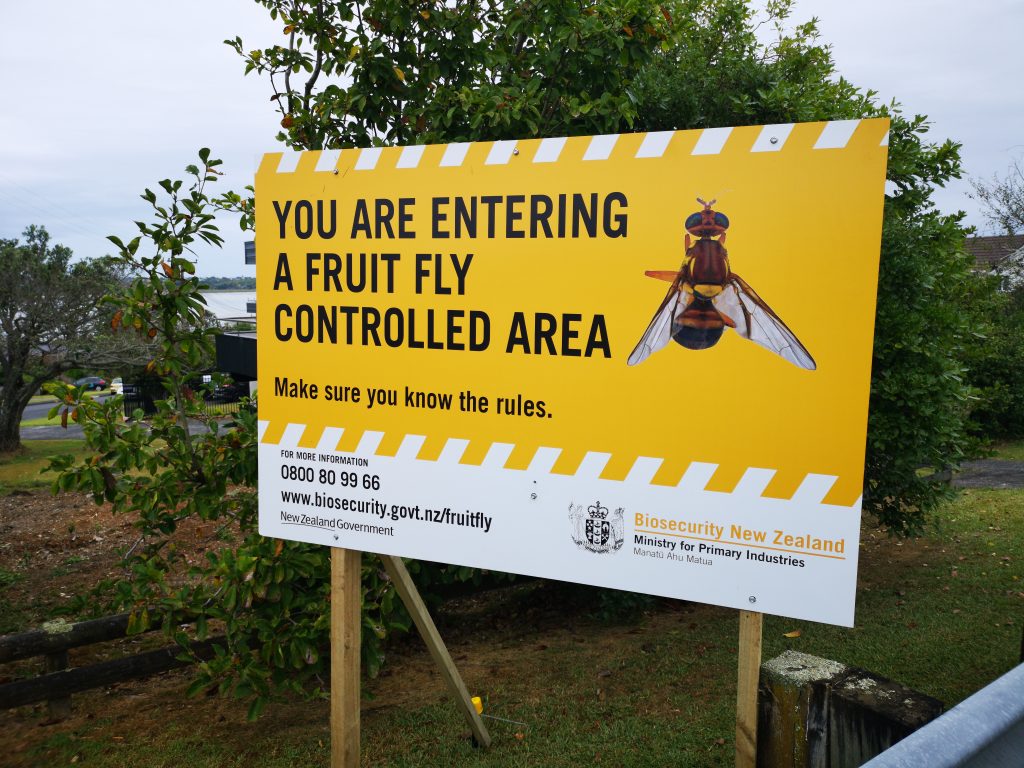By Mike Bain-The Daily Examiner.
Biosecurity controls were lifted from the Auckland suburb of Papatoetoe on Thursday night after no further evidence of the Oriental fruit fly was found in the area. This decision came after a month of intensive fruit fly trapping and inspecting hundreds of kilograms of fruit.
Mike Inglis, Biosecurity New Zealand Commissioner North, expressed relief as he called an end to the operation. He emphasized the importance of this work in protecting New Zealand’s horticulture, as the Oriental fruit fly poses a significant threat to both exports and home gardens.
Biosecurity New Zealand had quickly placed legal controls on the movement of fruit and vegetables in Papatoetoe on January 4th after a single male Oriental fruit fly was identified from a national surveillance trap. However, no further adult fruit flies, eggs, larvae, or pupae were found.
With no further detections over six weeks, the Controlled Area Notice restrictions were lifted, and response operations were closed. The Biosecurity New Zealand signs, and wheelie bins will be removed from the affected area in Papatoetoe over the next few days.
Mr. Inglis mentioned that checking of Biosecurity New Zealand’s 7800 fruit fly traps around the country, including some 200 traps in the Papatoetoe/Māngere area, will continue as normal
Key figures
- More than 1500 individual visits were made to check the 109 special fruit fly response traps in Papatoetoe/Māngere throughout the response.
- These traps are in addition to 187 routine fruit fly surveillance traps in the area.
- Over 600 biosecurity bins distributed in the community to collect produce waste for safe disposal.
- More than 470 kilos of fruit cut up and examined for any signs of fruit fly eggs or larvae.
- More than 150 Biosecurity New Zealand staff were involved throughout the response.
Interesting Info
1. **Oriental Fruit Fly:** The Oriental fruit fly, scientifically known as Bactrocera dorsalis, is a significant pest in many parts of the world. It can cause extensive damage to a wide variety of fruit and vegetable crops.
2. **Biosecurity Efforts:** New Zealand takes biosecurity very seriously. The country has an extensive network of surveillance traps and rapid response systems to detect and manage pest threats like the Oriental fruit fly.
3. **Community Involvement:** The success of biosecurity measures often relies on the cooperation of local communities. In Papatoetoe, Auckland, residents and businesses played a crucial role in adhering to movement controls and disposing of fruit properly to prevent the spread of the fruit fly.
4. **Detection and Control:** The detection of a single male Oriental fruit fly can trigger extensive trapping and inspection operations. In the recent case in Papatoetoe, more than 1500 visits were made to check special fruit fly response traps.
5. **Horticultural Sector:** The horticultural sector is vital to New Zealand’s economy. Protecting this sector from pests like the Oriental fruit fly is essential for maintaining the country’s exports and ensuring the health of home gardens.






